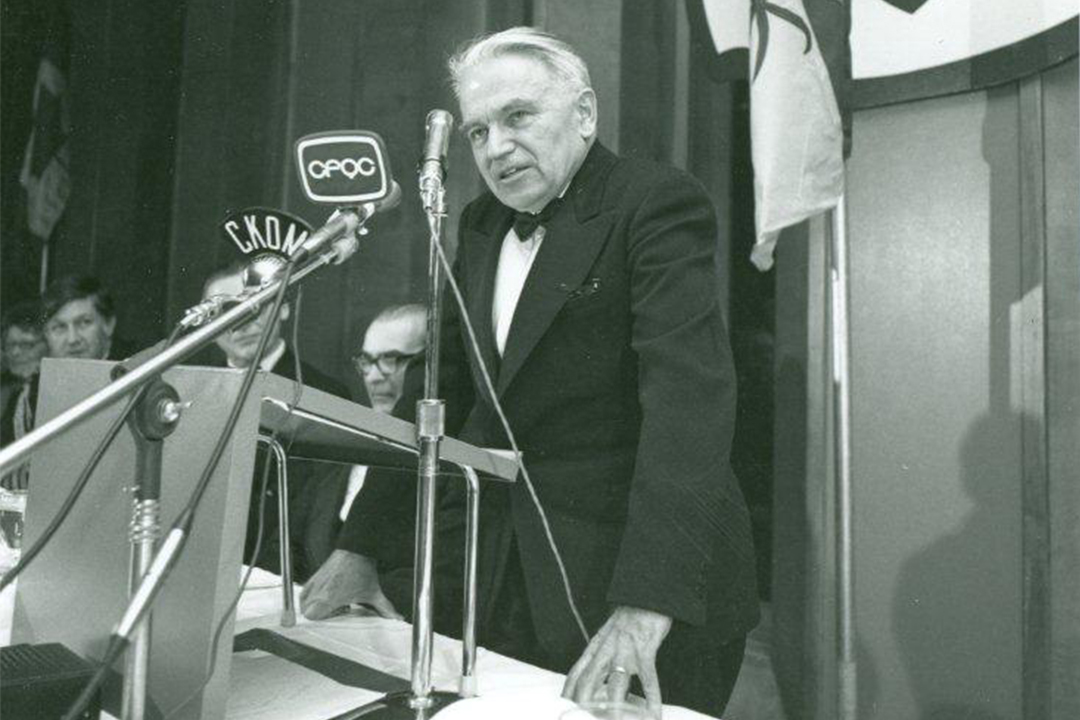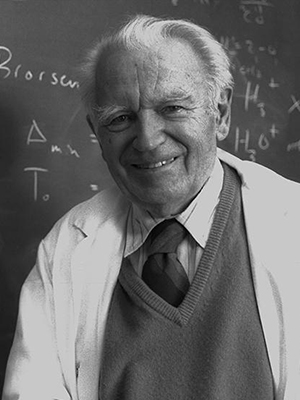
Nobel Prize history at the U of S
The University of Saskatchewan’s association with the prestigious Nobel Prize began 45 years ago when former U of S professor Gerhard Herzberg was named a Nobel Laureate in 1971.
By James ShewagaEstablished by Swedish inventor Alfred Nobel back in 1895, Nobel Prizes are awarded annually for outstanding achievement in six fields: chemistry, medicine, physics, literature, economic sciences and the pursuit of peace.
With the week of announcements of this year’s recipients now underway, we take a look at the two previous Nobel Prize winners associated with the U of S in the institution’s storied history:
Gerhard Herzberg

Born in Germany in 1904, Herzberg and his wife escaped Nazi persecution and emigrated to Canada in 1935, and he spent the next 10 years teaching in Saskatoon at the U of S. Herzberg established a spectroscopy laboratory at the U of S before moving on to Chicago and later to Ottawa where he worked with the National Research Council. He was awarded the Nobel Prize for Chemistry in 1971 for “his contributions to the knowledge of electronic structure and geometry of molecules, particularly free radicals.”
In his acceptance speech, Herzberg credited the U of S for the role the institution played in his career.
“It is obvious that the work that has earned me the Nobel Prize was not done without a great deal of help. First of all, while at the University of Saskatchewan I had the full and understanding support of successive presidents and of the faculty of the university who, under very stringent conditions, did their utmost to make it possible for me to proceed with my scientific work.”
Herzberg passed away in Ottawa in 1999, at the age of 94.
Henry Taube

The only Saskatchewan-born Nobel Laureate, Taube is also the only U of S graduate to have received the Nobel Prize. Born in 1915 in Neudorf, Sask., Taube earned the Nobel Prize for Chemistry in 1983 for his research into “the mechanisms of electron transfer reactions” while working at Stanford University at the time. Taube earned two science degrees at the U of S, a bachelor’s in 1935 and a master’s in 1937.
Taube was quick to thank his former colleagues and fellow researchers, during his Nobel banquet speech.
“I want to thank them all, co-workers and fellow workers, for the contributions they have made, which have made my own possible, and for sentiments so generously expressed on the occasion of this award.”
Taube also spoke fondly about studying under Herzberg at the U of S.
“He was one of my teachers in my four years at Saskatoon,” Taube told renowned science author István Hargittai in his book Candid Science III: More Conversations with Famous Chemists. “Herzberg was the clearest lecturer I had had up to that time, and perhaps the clearest ever. I took two courses from him, one in atomic spectroscopy and one in nuclear physics, and did well in them.”
Taube died in 2005 in Palo Alto, Calif., at the age of 89.

